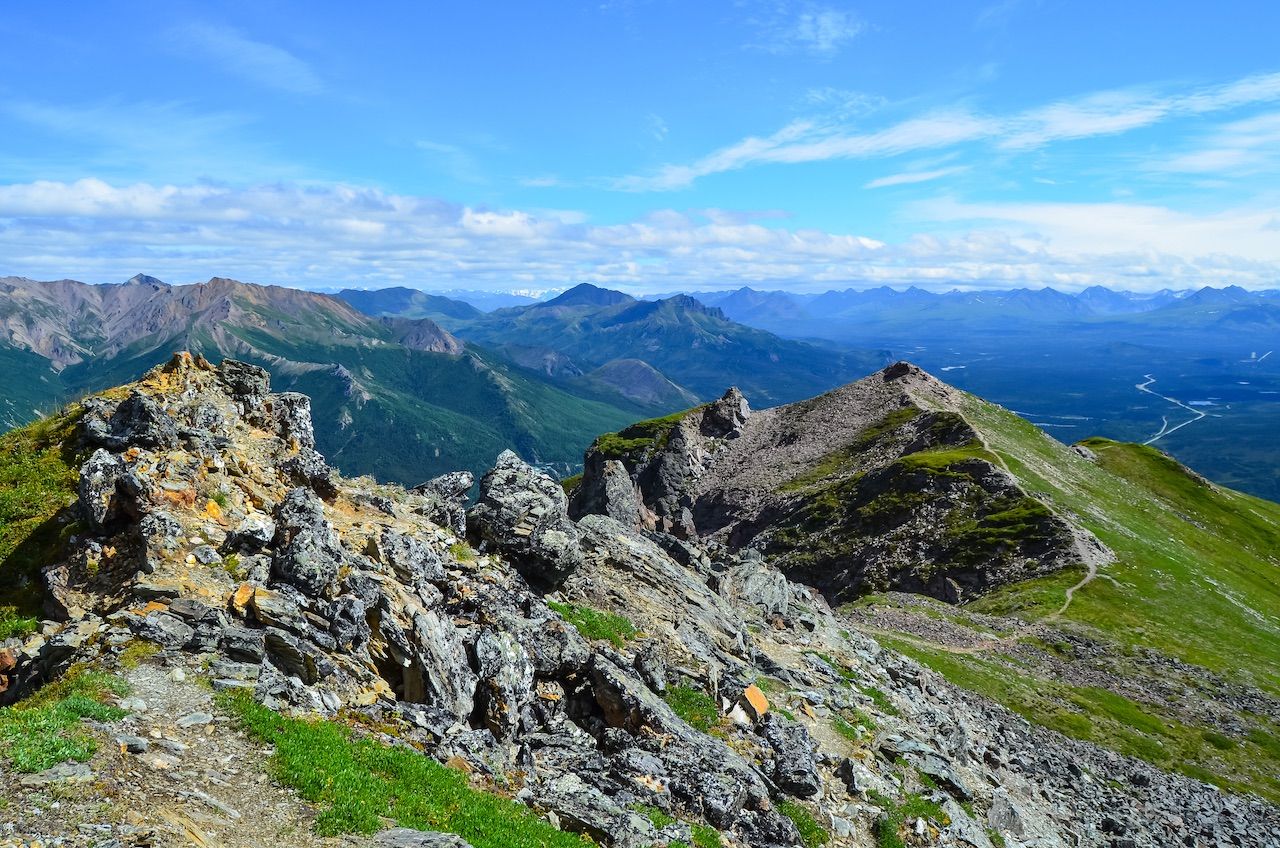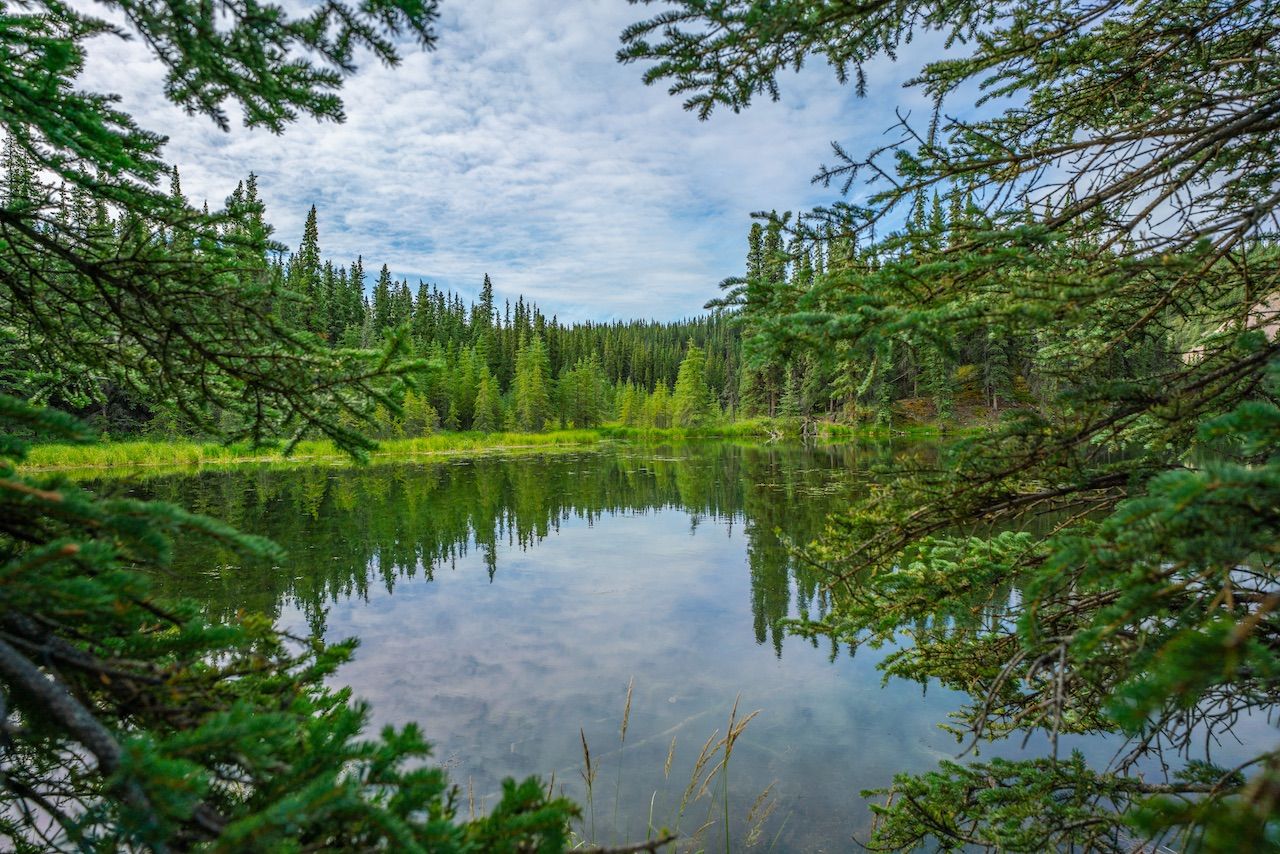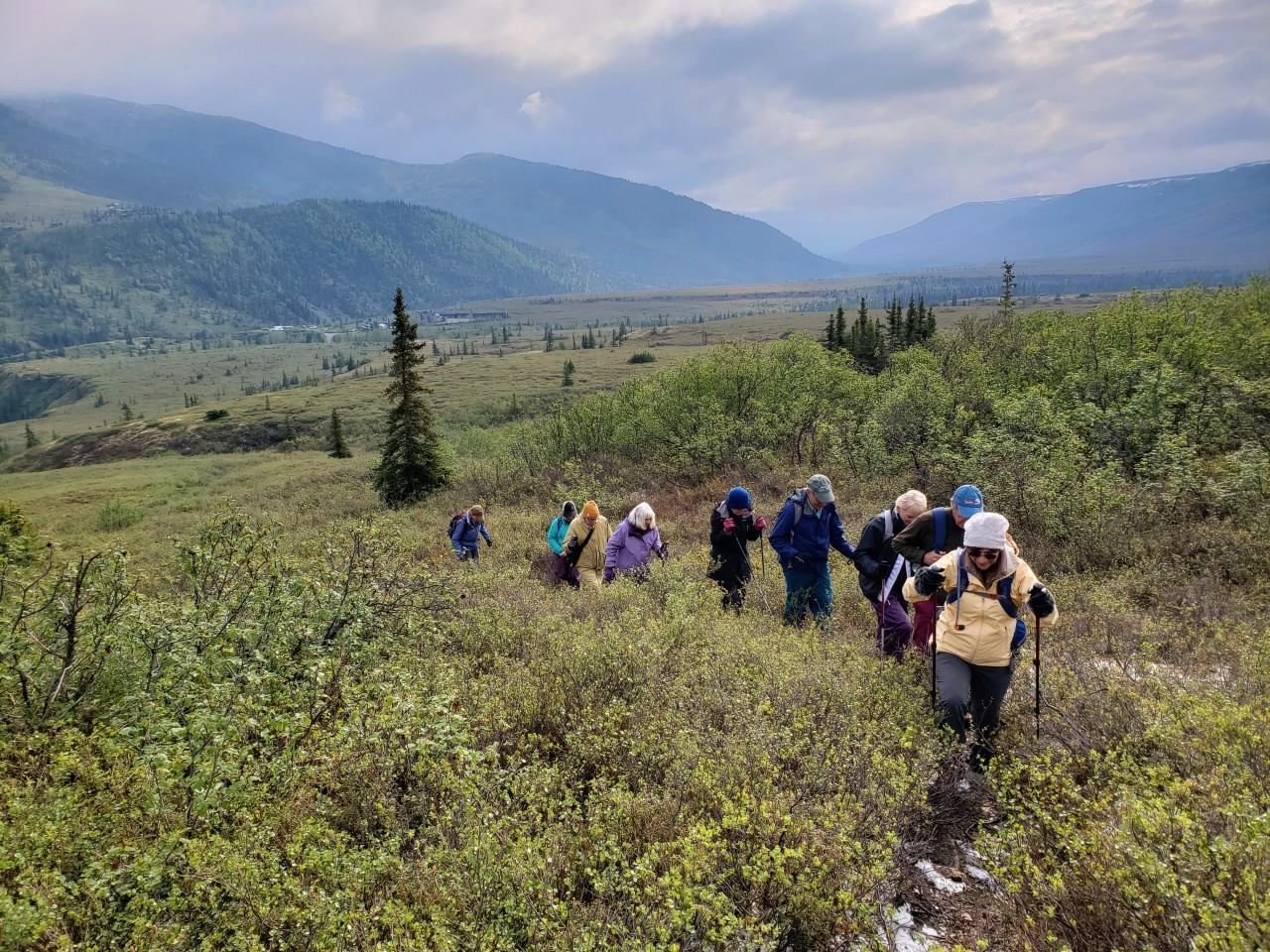Denali is not like most US national parks. It has a smattering of established trails in the frontcountry, but most trails are unmaintained. However, the established trails do offer a range of difficulty, from Mountain Vista’s easy 0.6 miles to Triple Lakes’ strenuous 9.5 miles. Most importantly, if you don’t want to hassle with buses and trip planning and overnight stays, a handful of hiking options such as the McKinley Station Trail and Savage Canyon Loop wind to, from, and around the Denali Visitor Center — where you can get more information.
Frontcountry hikes

Photo: Matej Halouska/Shutterstock
Mt. Healy Overlook — This is a strenuous 2.7-mile (one-way) trek that leads to incredible views of the park, about halfway up Mt. Healy. You’ll gain around 1,700 feet in elevation, starting in a spruce forest and eventually popping into fields of wildflowers and then up above treeline. An unmaintained trail continues to the peak of Mt. Healy, another 1.5 miles and 1,500 more feet upward. Start at the Taiga trailhead, found at the Denali Visitor Center, and break for the Mt. Healy Overlook trail after half a mile. On a clear, lucky day, you’ll see Denali from the overlook, looming 80 miles away.

Photo: Jay Yuan/Shutterstock
Savage River trails — Four trails wind around mile 15, including Savage River Loop. It’s a moderate 1.7 miles (round-trip) fit for the family, following the Savage River through a gorgeous canyon. You’ll see Mount Margaret to the west and Mt. Healy to the east. Savage Cabin Loop and the Mountain Vista Trail are both short and sweet at under one mile. The Savage Alpine Trail, on the other hand, is a strenuous four miles one way, gaining 1,500 feet into the Outer Range.
Note: The Savage River Shuttle runs from the park entrance to this area, though there is a parking lot for personal vehicles.

Photo: David Gonzalez Rebollo/Shutterstock
Horseshoe Lake — This trail starts around mile 0.9 and ends at the picturesque Horseshoe Lake 1.6 miles and 250 feet (down) later. It’s quite popular in summer, and for good reason. Once you break out of the spruce and aspen and reach the shore, the trail branches in two directions, looping around the lake. The south end leads to viewing platforms, the north end to the forest alongside the Nenana River. Look out for moose.
McKinley Station Trail — This streamside trail is an excellent way to acclimatize to hiking in Denali. You’ll walk 1.6 miles from the Spruce Loop to Riley Creek Mercantile, with the option to take a free bus back to the visitor’s center or walk back down. Elevation change is negligible — only 100 feet — and the return bus helps you back to the visitor’s center with a roundtrip time of about 1.5 hours. This is an ideal hike for families arriving into Denali who want a quick hike before moving further into the park

Photo: Denali Backcountry Lodge/Facebook
Hikes offered through lodges — Guided hikes and other activities are available from the park’s lodges. Denali Backcountry Lodge, for example, offers hikes up Quigley Ridge, Wickersham Dome, McKinley Bar, Eagle Ridge, and Blueberry Hill. Guided hikes range from quick two-hour excursions to full-day adventures. You can also take NPS-guided hikes, or “Discovery Hikes,” aka “disco hikes,” out of the Wilderness Access Center.

Photo: Agnieszka Bacal/Shutterstock
Hiking the backcountry — Once you’re in the backcountry, you’ll run across unmaintained “social trails,” not blazed by the park or lined with signposts or cairns but blazed by decades of hiking boots. But know that here, you have the freedom to roam and to pick crowberries as you see fit. Counter to what you may expect, the park asks that you don’t hike single-file and instead spread out across the plain — or tundra or taiga or what have you — to lessen your mark on this wilderness.
If you go at it on your own, and especially if you go off-trail, it’s important to wear layers and bring plenty of water, a compass, and bear spray (which can be supplied by your lodge). Matador’s backcountry gear guide offers a thorough rundown of what to have on you when you set foot in the wilderness.
If you are comfortable going off-trail, keep a few things in mind:
- Always scout out your surroundings, especially if you need to cross a river. Should you fall, where might you end up?
- Consider hiking along gravel river bars; they’re simple to follow and are usually a good place to scout for wildlife.
- Should you see moose, caribou, wolves, or bears, do not approach them. This is their home, not yours.
- Most social trails begin near where the bus drop-offs are. However, it’s important to remember that these are not maintained trails. In some places, they are hard to follow and used by wildlife more than human visitors.
- While you should always tell a trusted person your plans to set out into the backcountry before you go, do not post GPS coordinates telling friends and family to check out the trail you blazed through the backcountry. Park rangers don’t want the trails getting too busy because they aren’t maintained, or for those not prepared for backcountry treks to get inspired to head out there because of a cool Instagram opportunity.
